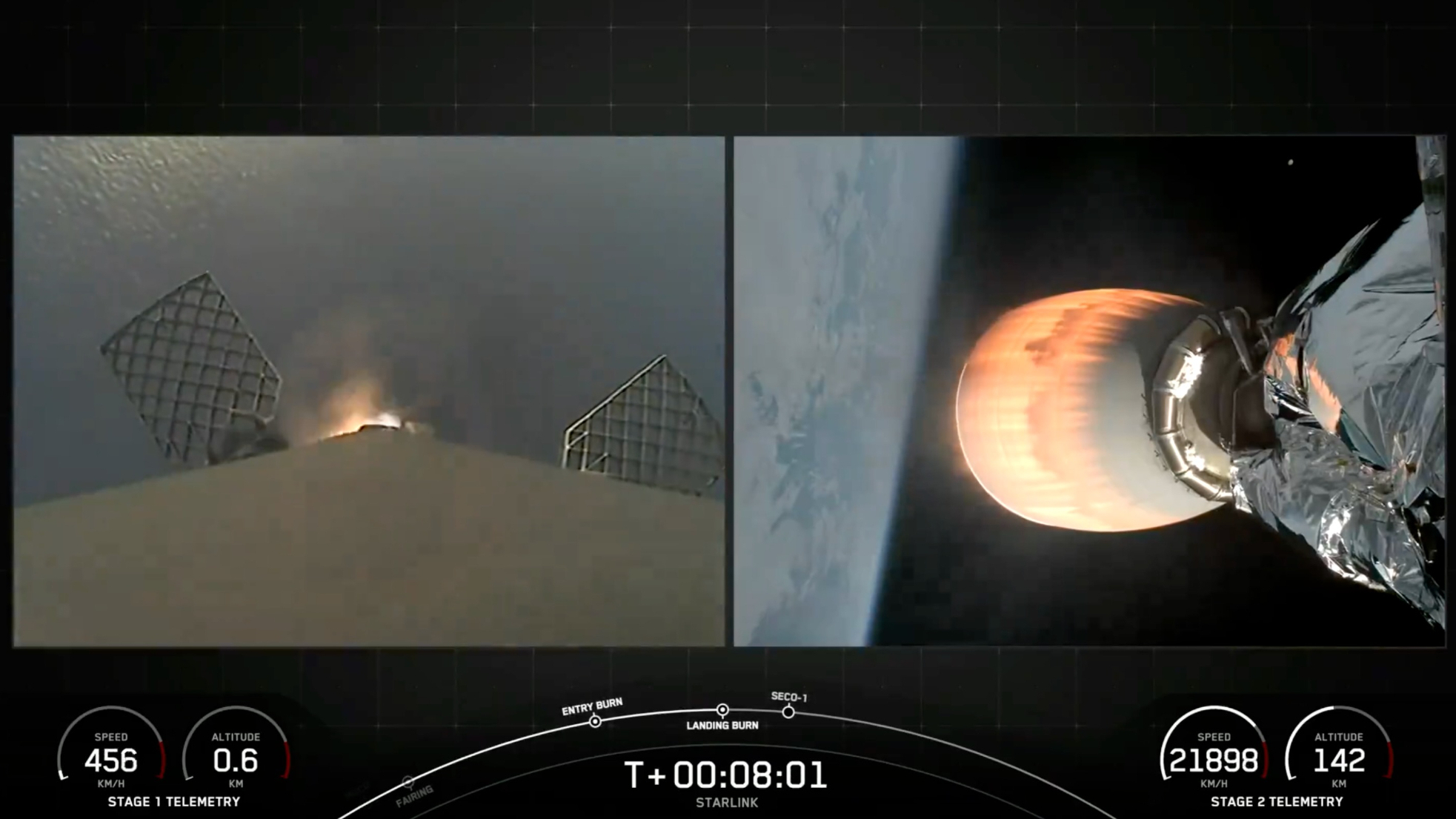SpaceX launched yet another batch of its Starlink satellites to orbit today (Sept. 20).
A Falcon 9 rocket carrying 20 Starlink craft lifted off from Vandenberg Space Force Base on California's foggy central coast today at 9:50 a.m. EDT (1350 GMT and 6:50 a.m. local California time).
The Falcon 9's first stage came back to Earth as planned, landing on the SpaceX drone ship "Of Course I Still Love You" in the Pacific Ocean about eight minutes after launch.

It was the 13th launch and landing for this particular booster, according to a SpaceX mission description. Ten of those flights have been Starlink missions.
Related: Starlink satellite train: How to see and track it in the night sky
SpaceX has launched more than 7,000 satellites to date for Starlink, its megaconstellation in low Earth orbit that provides internet service to customers around the world. More than 6,300 of those spacecraft are active today, according to satellite tracker and astrophysicist Jonathan McDowell.
Thirteen of the 20 Starlink craft that went up today can beam service directly to cellphones, a relatively new capability SpaceX is building out in LEO. The first direct-to-cell Starlink satellites went up in January 2024, and more than 100 now circle Earth.
Get the Space.com Newsletter
Breaking space news, the latest updates on rocket launches, skywatching events and more!
SpaceX has now launched 91 Falcon 9 missions in 2024, 62 of which have been Starlink flights.
The company's launch tally overall for the year is 94. That number includes one mission of its powerful Falcon Heavy rocket and two test flights of Starship, the giant new vehicle SpaceX is developing with hopes of settling the moon and Mars.
Join our Space Forums to keep talking space on the latest missions, night sky and more! And if you have a news tip, correction or comment, let us know at: community@space.com.

Michael Wall is a Senior Space Writer with Space.com and joined the team in 2010. He primarily covers exoplanets, spaceflight and military space, but has been known to dabble in the space art beat. His book about the search for alien life, "Out There," was published on Nov. 13, 2018. Before becoming a science writer, Michael worked as a herpetologist and wildlife biologist. He has a Ph.D. in evolutionary biology from the University of Sydney, Australia, a bachelor's degree from the University of Arizona, and a graduate certificate in science writing from the University of California, Santa Cruz. To find out what his latest project is, you can follow Michael on Twitter.









